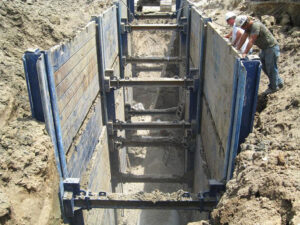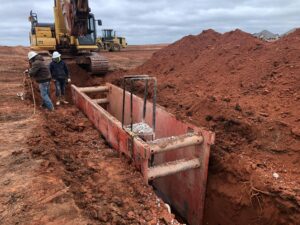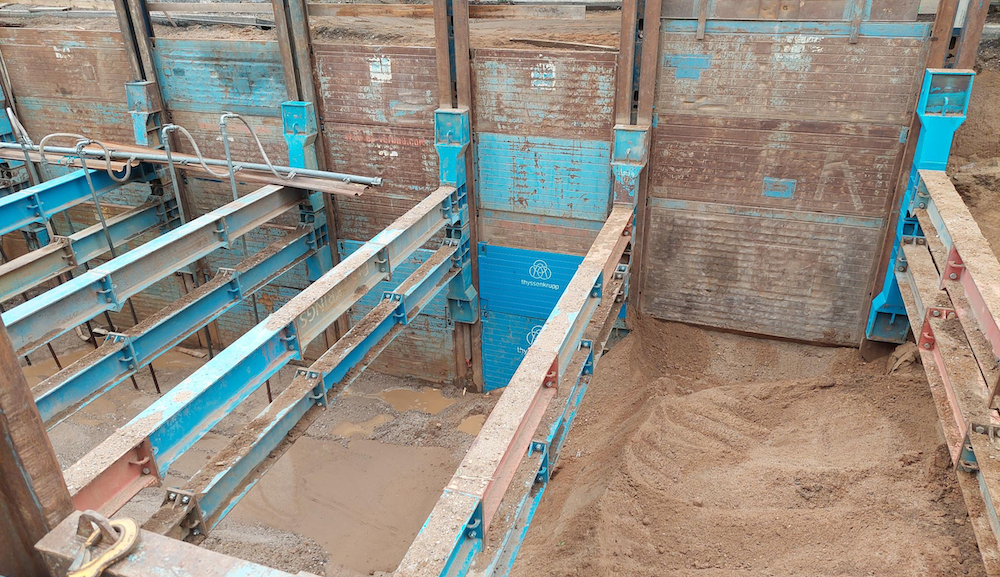When it comes to excavation and trenching in the construction and civil engineering fields, safety, efficiency, and precision are paramount. In this context, two essential tools stand out: slide rail systems and trench boxes. These ingenious structures serve as protective shields for workers and support the walls of excavations, mitigating the risk of cave-ins and ensuring that work proceeds smoothly and securely. But how do you choose between them? Which applications do they excel in, and what are the best practices for their installation? In this article, we delve into the world of slide rail systems and trench boxes, uncovering their unique advantages, ideal use cases, and the methods to ensure their proper installation. Whether you’re a construction professional seeking to enhance your excavation practices or a project manager looking to prioritize safety, join us on this journey to explore the best applications and installation methods for these indispensable trenching solutions.
Slide Rail Systems:
 Slide rail systems are versatile trench protection solutions designed to provide both safety and flexibility. They consist of vertical rails and horizontal panels that are installed incrementally as the excavation deepens. One of their primary advantages is adaptability to various excavation sizes and shapes, making them suitable for irregular or confined spaces. Slide rail systems are ideal for:
Slide rail systems are versatile trench protection solutions designed to provide both safety and flexibility. They consist of vertical rails and horizontal panels that are installed incrementally as the excavation deepens. One of their primary advantages is adaptability to various excavation sizes and shapes, making them suitable for irregular or confined spaces. Slide rail systems are ideal for:
1. Large and Deep Excavations: They excel in excavations with significant depth and width variations, providing consistent protection and support throughout the project.
2. Complex Geometries: Slide rail systems can be configured to accommodate irregular trench shapes, including L-shaped or curved excavations.
3. Projects with Changing Soil Conditions: They are well-suited for sites with varying soil types since they can be adjusted as conditions change.
Trench Boxes:
 Trench boxes, also known as trench shields or trench shoring boxes, are sturdy, pre-fabricated structures designed to withstand lateral soil pressure and protect workers inside the trench. They are typically used for linear excavations with consistent width and depth, such as utility installations, pipelines, or sewer repairs. Trench boxes are particularly beneficial for:
Trench boxes, also known as trench shields or trench shoring boxes, are sturdy, pre-fabricated structures designed to withstand lateral soil pressure and protect workers inside the trench. They are typically used for linear excavations with consistent width and depth, such as utility installations, pipelines, or sewer repairs. Trench boxes are particularly beneficial for:
1. Uniform Excavations: They are most efficient when the trench has a consistent width and depth along its length.
2. Lower Installation Time: Trench boxes can be installed more quickly than slide rail systems, making them ideal for projects with tight schedules.
3. Routine Maintenance: For projects involving routine maintenance or repairs, trench boxes provide a dependable solution for worker protection.
Installation Methods:
The installation of slide rail systems and trench boxes demands careful planning and adherence to safety protocols. For slide rail systems, installation typically involves the sequential placement of vertical rails and horizontal panels. This incremental approach ensures continuous support as the trench deepens.
Conversely, trench boxes are lowered into the excavation as a single unit, providing immediate protection. Proper installation of both systems requires skilled personnel who are trained to follow manufacturer guidelines and industry safety standards.
In conclusion, the choice between slide rail systems and trench boxes hinges on the specific demands of your excavation project. Slide rail systems offer adaptability and versatility, while trench boxes are highly efficient for uniform excavations. Regardless of your choice, proper installation and strict adherence to safety protocols are essential to ensure the well-being of workers and the success of your project.
Slide Rail and Trench Boxes - What are the Best Applications and Installation Methods?
This article explores the best applications and installation methods for slide rail systems and trench boxes in construction and excavation. Slide rail systems offer adaptability, making them suitable for large, complex excavations with changing soil conditions. Trench boxes, on the other hand, excel in uniform excavations and save installation time. Both systems require skilled installation following safety protocols. This comprehensive guide provides insights into choosing the right solution for specific excavation needs, prioritizing worker safety, and ensuring project success.
